Exploring Mexico’s Caves—Some of the Deepest Pits in the World
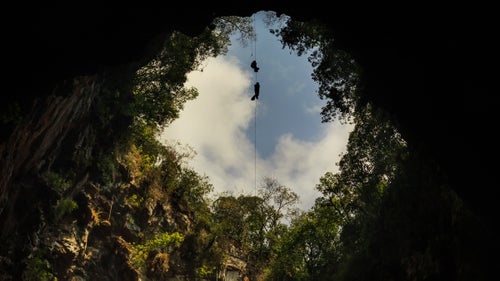
American cavers were first to descend the 1,200-foot deep Sotano De Las Golondrinas, better known as the Cave of Swallows, in 1966. It’s one of the world’s largest cave shafts in the world and one of Mexico’s 13 natural wonders. The cave is so enticing that, in 2012, then President of Mexico, Felipe Calderon, was lowered by rope to the bottom of the shaft to experience it first-hand.
Today, there’s a paved road leading to the entrance of the cave to encourage tourism, and people from all over the world visit to peer over the edge and watch the white-collared swifts who call the cave home. Very few of these vistors actually rappel inside to see the bottom. Despite the popularity of this natural wonder, the inside of the cave is still a genuine wilderness experience. The limestone karst of the area of Acquismon is home to many caves, Sotano de Golondrinas being only one of them. Here is a collection of photographs from the Cave of Swallows and other shafts surrounding it.
Photo: Scott Christenson and Jerry Cindric ascend out of Sotano De Huasteca, a 420-foot deep limestone pit in Aquismon. Using mechanical ascenders to climb the rope, they are able to quickly and efficiently exit the cave. Rock climbing the walls in the cave would disrupt the nests and habitat of the white-collared swifts. Leaving behind climbing chalk and climbing bolts would be unnecessary to explore the cave and is damaging to the fragile ecosystem.
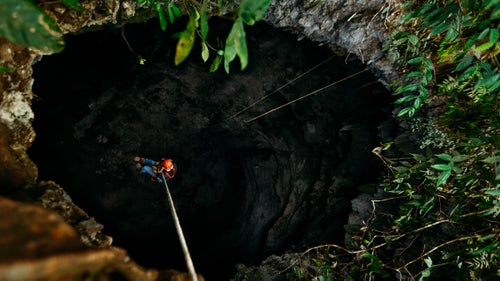
Jerry Cindric stares into a blackness as he rappels into Sotano De Cepias (412 feet). When rappelling into these pits, it is hard to tell when the rope has reached the bottom of the cave. Cavers tie a knot on the end of the rope to ensure they don’t rappel off of the end and fall to their deaths.
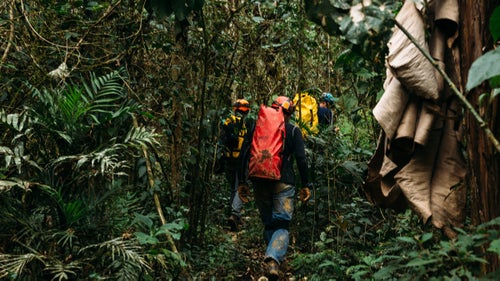
Cavers walk through a tropical forest, passing huts and farmers to access Cueva De Linda, a beautiful horizontal limestone cave in Acquismon.
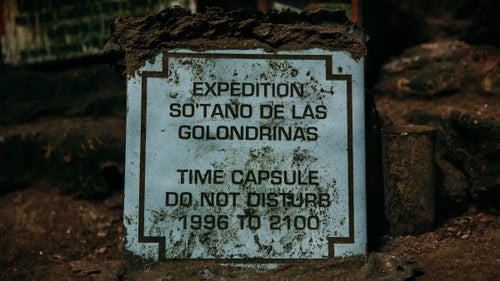
A plaque at the base of Sotano De Golondrinas.
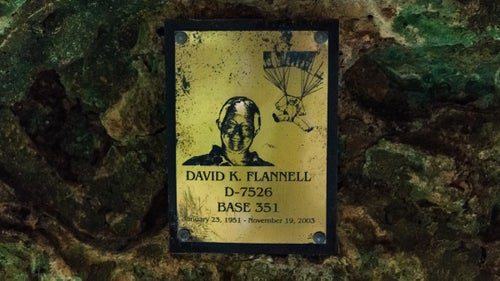
A memorial attached to a rock at the base of Golondrinas. David Flannell, a BASE jumper, died in a rappelling accident in 2003. Although Sotano De Las Golondrinas has been made famous by the scene of BASE jumpers in BBC’s “Planet Earth” series, the activity is no longer allowed because of the sound of parachutes opening disturbs the birds that live in the cave.
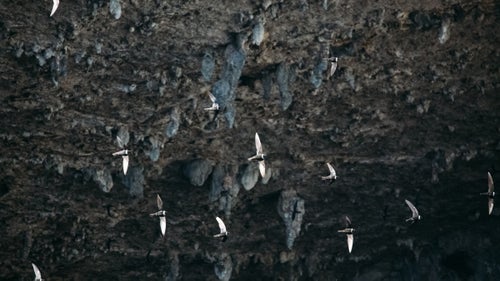
White-collared swifts fly out of Hoya De Gua Guas. Not unlike Sotano De Las Golondrinas, thousands of the birds use holes in the walls of these gigantic limestone shafts to hide their nests. Predators wait on the edge of the pit to hunt the birds, so they fly out very quickly. In the morning the swifts gather in large swarms, ascending the cave in a slow-moving circular motion before jetting straight out of the cave at speeds up to 62 mph. The sound of the birds combined with the echo of the gigantic sinkhole attracts tourists that come to sit near the entrance and watch.
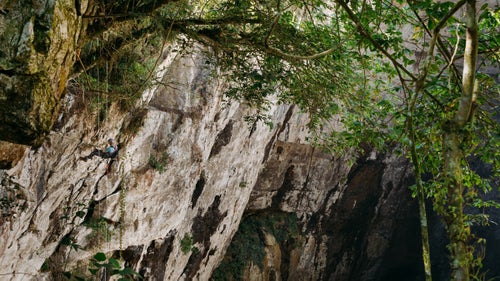
Ben Alford begins his 480-foot descent into Hoya De Gua Guas, a 735-foot-wide sinkhole. What Ben does not realize until he begins his ascent is that he just passed by a large bee’s nest. We all had bees crawling all over us as we reached the surface of the pit.
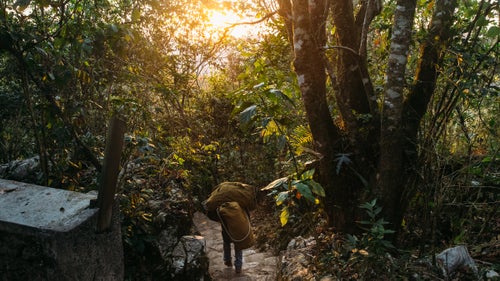
A local porter carries a 1,200-foot rope weighing over 80 pounds. A single line of rope is needed in order to rappel to the base of Sotano De Las Golondrinas. The weight of the rope itself creates many challenges beyond carrying it to the cave. The rappel can take up to forty minutes but varies depending on your desired speed. In the past people have used spray bottles to keep the rope from heating up too much from friction.
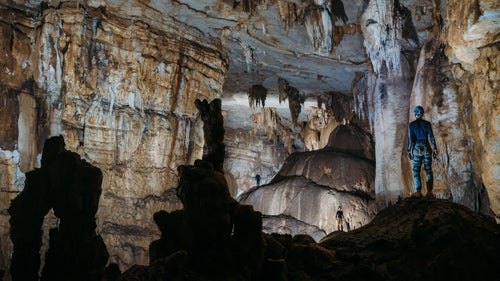
Cavers give scale to this gigantic passage in Cueva De Linda (“beautiful cave”). This photograph was captured using five off-camera flashes which were fired using radio transmitters. The echo in this cave was so great that you could not communicate with another person unless they were within a 25-foot range.
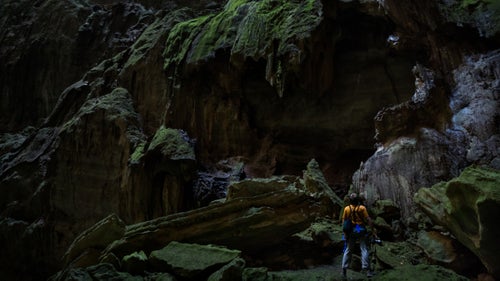
Jesse Barden inspects a piece of broken flowstone at the base of Golondrinas. Looking at formations like this makes you wonder what the interior of the cave looked like prior to the ceiling collapse, which revealed the cave to the surface.